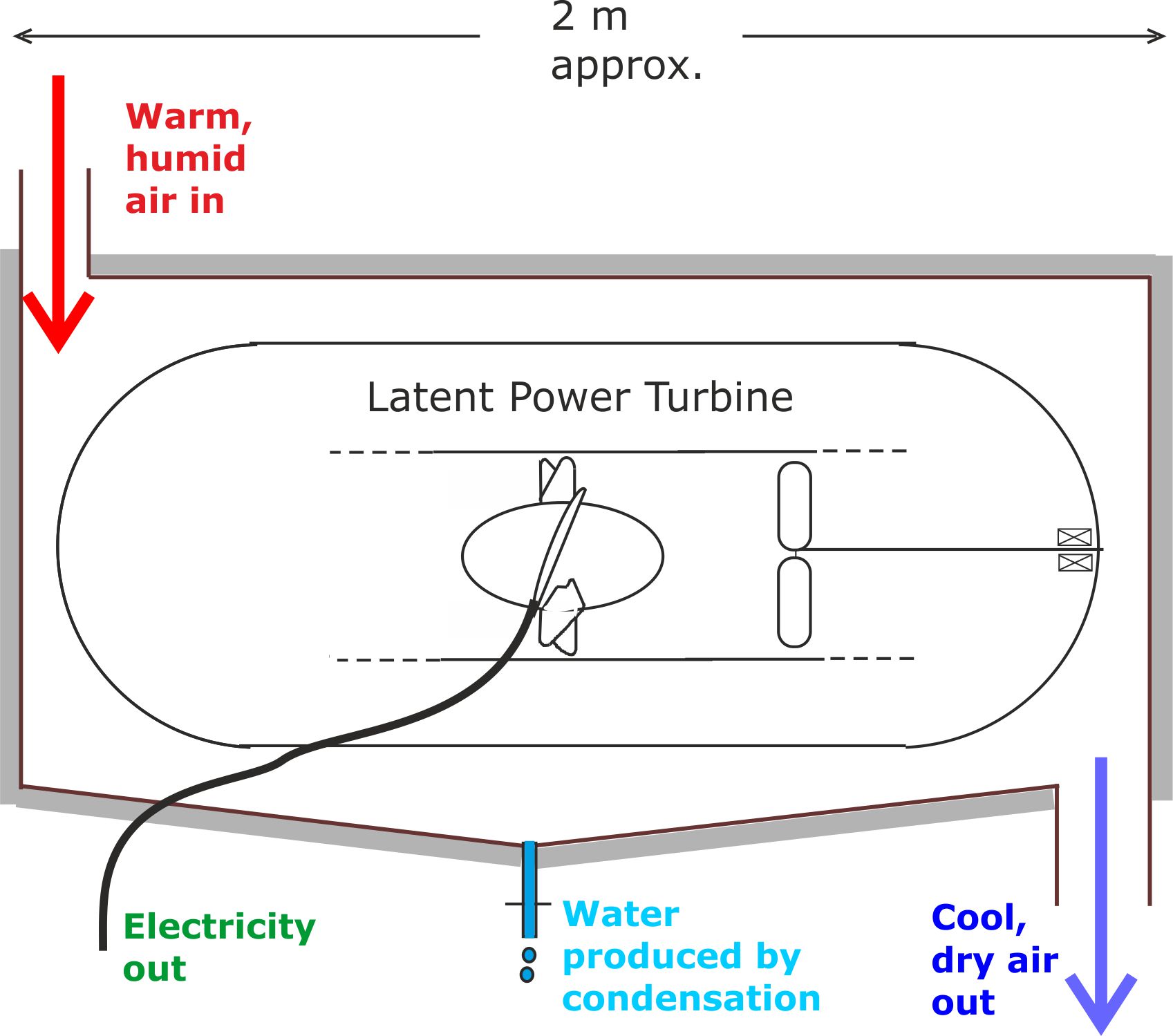
Figure 1. A cautious estimate of the size of Latent Power Turbine required to meet the needs of a family of four people. [It is possible that the unit could be made considerably smaller.]
Latent Power Turbines offer seven core benefits
- They can run on thermal energy extracted from the atmosphere, the sea or from underground. This will provide us with green power 24 hours a day for as long as humanity remains on Earth.
Installation costs should be less than £5,000 per family of four and they should last for up to 50 years. There are no running costs apart from an annual service (say £100 per consumer) plus any taxes the government may add. - They can operate at full output 24 hours/day with surplus electricity being used to manufacture hydrogen fuel for transport systems. This will provide carbon free transport fuel.
Alternatively, if LP Turbines can be shrunk to fit into vehicles, they could be used to power the vehicles directly. The second option is likely to be most attractive in warm climates.
- Heat can be extracted from hot atmospheric air to provide free cool air ventilation.
An important asset in our COVID era is that the constant supply of fresh LP Turbine cooled indoor air will be more hygienic than fan or air conditioning systems which rely on blowing stale air around rooms instead of removing it.
In tropical climates, air cooling may be their primary function of LP Turbines with electricity being produced as a free by-product. - Finding uses for this surplus electricity will drive innovation in warm climates.
- The air cooling process will also extract moisture from humid air. Cooling a house for a small family will also deliver sufficient clean water to meet their basic drinking, cooking and hygiene needs.
- Developing countries will be able to leapfrog the national power grid stage of development because all electricity will be generated locally.
- Businesses in the developing world could take control of their own power and hydrogen fuel production. This will liberate them from some of the most damaging corruption and bribery problems that they have to face.
Page contents
1 Different ways of exploiting LP Turbines
1.1 Low cost, pollution free energy
1.2 ‘Free’ air conditioning (cooling)
1.3 Low cost hydrogen fuel
1.4 Oil substitutes for chemical feedstock use
1.5 Low cost fresh water for arid regions
1.6 Reducing the land area we need for food production
1.7 New economic roles for oil producing countries
1.8 Enriching the soil for crop and tree growth
1.9 Economically important metals and other minerals
1.10 High level nuclear waste
1.11 Rain forests
1.12 New job opportunities for communities left behind by
globalisation and automation
1.13 Aviation
1.14 Shipping & deep sea mining
1.15 Road vehicles
1.16 Resilience to cyber attacks, massive solar storms and natural disasters
1.17 Keeping sewage out of rivers
1.18 A new challenge for the valiant campaigners against climate change
2 International implications of an LP Turbine (LPT) economy
Part 1 looked at different ways of exploiting LP Turbines. In Part 2 we make some predictions concerning the social and political consequences of their adoption.
**********************************
PART ONE:
Different ways of exploiting LP Turbines
1.1 Low cost, pollution free energy
- LP Turbines can run on heat extracted from
(i) the air around us,
(ii) the ground underneath us
(iii) the seas that surround us
(iv) waste heat produced by industry. - LP Turbines are very benign.
No high temperatures, high pressures, toxic chemicals or expensive construction materials are required. - Depending on their size, power output can vary between several kW and several MW.
- ‘Energy’ accounts for approximately 30% of the production costs of many of the primary products our society depends based on.
Here are a few examples where we can expect to see a big drop in ‘raw material’ prices:
t plasticst steel t glass tcementt bricks t building grade sand t prepared food t electronic data storage and processing services. - "Power to the people!"
A wall or roof mounted LP Turbine the size of a public telephone box mounted on the roof or wall of a house could meet the heating, power and air cooling needs of a family of four. Apart from taxation and servicing there are no running costs. Consequently an LP Turbine would pay for its purchase and installation in about four years.
-
A change of focus for environmentalists
Their focus will change from the daunting task of limiting the environmental damage caused by dirty energy to the more uplifting task of championing the ethical use of cheap clean energy. Left to itself, the free market will take advantage of cheap energy to churn out more plastic goods and other environmentally damaging products. On the other hand, if we plan our future manufacturing and lifestyles wisely, we could be at the start of a new clean planet era. Environmentalists need to be proactive from the earliest days of LP Turbine commercialisation, speaking loudly and campaigning vigorously to ensure that we do not lose this chance to repair the damage we have done to our planet.
1.2 ‘Free’ air cooling
If LP Turbines are run on heat extracted from the air, the air cools as a consequence. This creates a potential icing up problem in cool damp conditions, such as in the UK in winter.
To prevent LP Turbines icing up we could include defrosting cycles, similar to those already used in heat pump based central heating systems. Alternatively, an electrostatic method of preventing the build-up of ice may be possible.
But in warmer parts of the world, LP Turbines will provide power and free air cooling, for the price of buying a single LP Turbine unit.
Factory working conditions and productivity would improve in hot climates as a free bonus of power generation. [For research evidence of the productivity benefits of cooling hot factory air visit
: http://www.isid.ac.in/~pu/dispapers/dp14-10.pdf]
The outdoor equivalent would be to cool the pavements in shopping, tourism and pilgrimage districts by extracting thermal energy from gaps underneath the pavements.
1.3 Low cost hydrogen fuel
1.3 Low cost hydrogen fuel
Hydrogen can be used as a pollution free alternative to petrol and diesel for most of our road vehicle needs. This possibility is discussed in greater detail in out Road Vehicle section below.
Other forms of transport such as ships and trains could also be adapted to run off hydrogen. But aircraft would need to be completely redesigned because they would probably carry their hydrogen in the fuselage in liquid form.
Hydrogen is unlikely to be burned instead of natural gas in central heating systems because it will be simpler to remove existing gas fired boilers and replace them with electrically heated units, with the electricity being provided by local LP Turbines.
Using LP Turbines to manufacture hydrogen
In an LP Turbine era it is envisaged that most buildings will be structurally linked to sufficient LP Turbine capacity to meet at least twice their current peak electricity needs. The surplus and off-peak electricity they are capable of generating could be used locally for splitting water into hydrogen and oxygen.
LP Turbines could also be used to power the compression or liquefaction equipment required for compacting the hydrogen gas for local storage.
1.4 Oil substitutes for chemical feedstock use
Approximately 20% of oil is used as a chemical feedstock in the manufacturing of plastics, paints, drugs, fertilisers and other products. Synthetic replacements for oil are already available. They will become commercially competitive if the energy component of their manufacturing can be reduced.
Seaweed farms are an alternative source of algae. They have the advantages that they don’t take up any land, oxygenate the sea water, capture CO2 from the atmosphere and mop up a range of seawater pollutants including micro-plastics.
1.5 Low cost fresh water for arid regions
There is plenty of water in our oceans. The snag is that desalinating sea water is a very energy intensive business. [It requires about 3kWh of electricity to desalinate 1 m3 of sea water.]
Further energy is then required to pump the desalinated water inland.
LP Turbines could reduce the cost of both desalinating the water and then delivering it to the customer.
Please visit our dedicated water purification page for further details.
1.6 Reducing the land area we need for food production
Arid land has a low economic value. But if LP Turbines are used to ‘green the deserts’, countries ‘blessed’ with arid landscapes would enjoy a sudden increase in the value of their territory.
The bulk of food production could be done indoors under glass, with additional food production and large tracts of forested leisure land being created by greening the deserts.
1.6.1 Features of an arid climate glasshouse
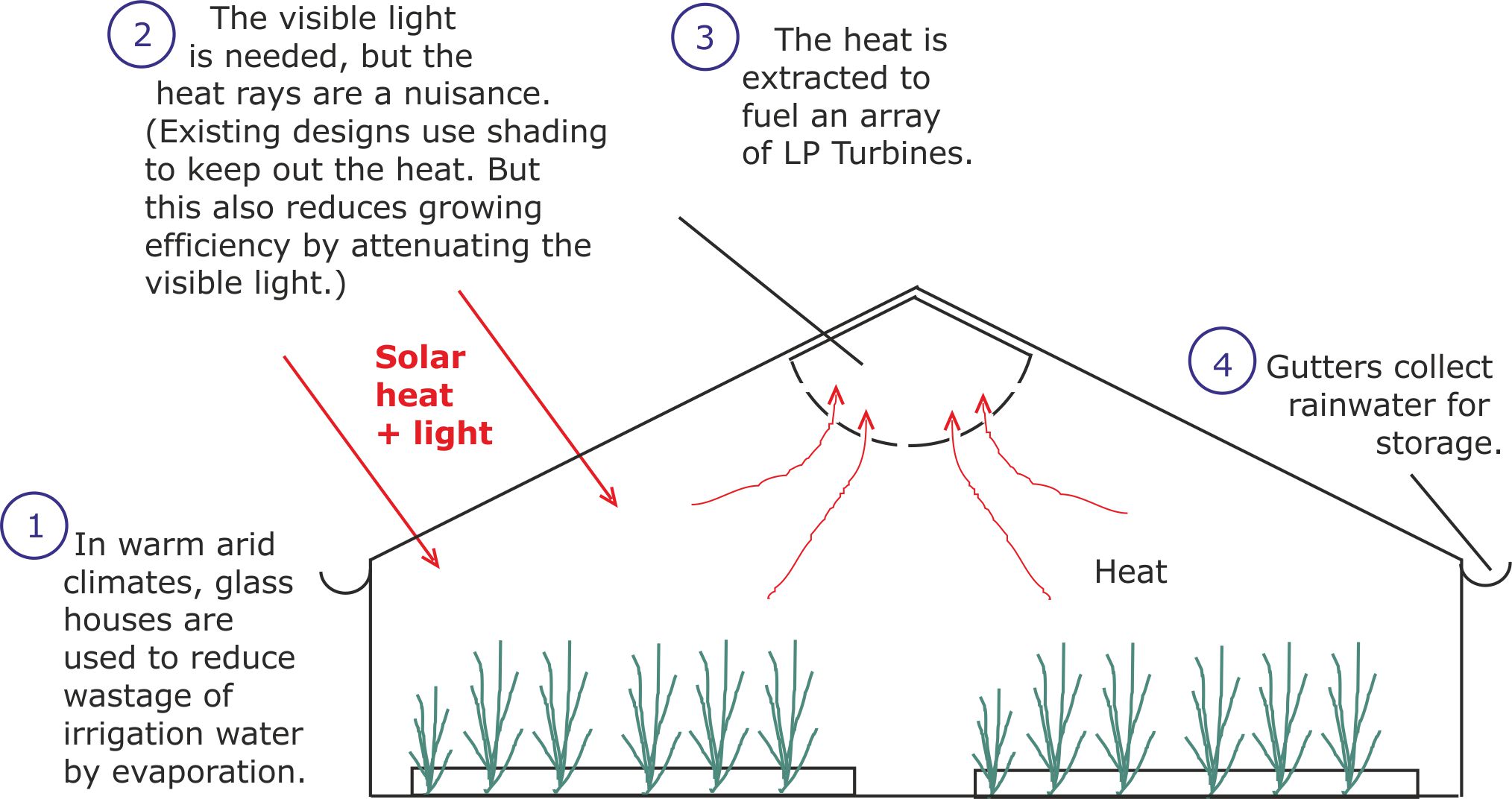
Figure 2. For maximum productivity, glass houses would be used to minimise the loss of water by evaporation. LP Turbines would condense the extracted water vapour so that it can be recycled.
Glazing that keeps the water vapour in also keeps locusts and other insect pests out. This will reduce the amount of pesticides and other chemicals required for food production.
The LP Turbines could provide illumination after dark, making prolonged day plant growth possible. Combined with optimised growing temperatures, this would approximately double the returns on glasshouse investment.
In extreme climates such as Siberia and the Gobi Desert, the glass houses could be double glazed with an infill of aerogel to maximise thermal insulation. [Mass production and low energy costs will bring down the cost of aerogel.]
Horticultural polythene tunnels or glasshouses?
Polytunnels are less likely to be damaged by flying objects in storms than traditional horticultural glasshouses. But glass is less of a threat to biodiversity and glasshouses may come back into favour in an LP Turbine era, thanks to the availability of very low cost electricity combined with widespread access to cheap desert sand.
Silica sand can be melted at around 2,000oC to create high optical quality glass with good thermal shock resistant properties.
This would be in competition with conventional soda lime window glass which is made from a mixture of silica, sodium carbonate and calcium carbonate. Soda lime glass has a lower melting point of around 1,400 – 1,600oC, keeping manufacturing energy costs down. Both pure silica and soda lime glass will become cheaper thanks to LP Turbines, with the manufacturer having the choice of making either product.
1.6.2 Aeroponics
LP Turbine cooled glass houses would be ideal for the emerging agricultural technique of aeroponics. This method of growing plants promises to maximise the rate of plant growth while minimising irrigation water requirements. [https://en.wikipedia.org/wiki/Aeroponics]
1.6.3 Cell culture replacements for farm animals
Research suggests that cell cultures could replace the milk and meat production functions of farm animals. But cell culture is expensive because of the large amounts of energy required. The cost problem could be solved in warm climates if glass houses were used to grow fruit and vegetables and the electricity generated by cooling the glasshouses used for cell cultivation.
Here is a specific example.
Based on NASA research, an alternative to animal farming is being developed. This will allow single cell protein (a meat substitute) to be produced by fermentation using CO2 extracted from the air and water. [https://en.wikipedia.org/wiki/Solar_Foods] The environmentalist George Monbiot is a big fan but sceptics point out that significant amounts of electrical energy are required. This criticism could be overcome by using the electricity generated by LP Turbine cooled glass houses.
1.7 New economic roles for oil producing countries
(i) Middle Eastern countries
An inevitable consequence of humanity abandoning fossil fuels is that the oil exporting countries will suffer economic damage. Fortunately LP Turbines offer new economic opportunities for all of them, especially those located in the Middle East.
Each Middle Eastern state could start producing some of its food under glass, using LP Turbines to cool its glasshouses. This would trigger a positive feedback loop, allowing glasshouse farming to expand rapidly until each country became self sufficient in energy, food and desalinated water. The states would then go on to generate surplus electricity that could be used for making silica glass, sintered sand building blocks and building sand for export.
The positive feedback loop: Starting from modest beginnings, the electricity generated by cooling the first generation of glasshouses would be used for making the glazing quality glass and the other construction materials required to build a second generation of glasshouses. These in turn would generate yet more electricity for the glazing glass and other construction industries. This would allow an even larger third generation of glasshouses to be built. And so on.
In the short term, oil rich Arab countries may look upon LP Turbines as a threat to their economies. But in the long term they will gain far more from greening their deserts tol help reverse climate change. A 2009 study suggests that at least 37 million people in Arab countries could be displaced by climate change by the end of the century. [http://www.carboun.com/climate-change/the-impact-of-sea-level-rise-on-the-arab-world-2/]
(ii) A new role for Gazprom and the Western Siberian oil and gas fields
In an LP Turbine era, when there will be little need for gas and oil, Russia could become the world centre for atmospheric carbon capture and storage. This role would take advantage of Siberia’s cold climate and Gazprom’s extensive network of oil and gas pipelines.
The capital investment required to construct the carbon capture plant could be raised as a worldwide carbon offsetting charge on all airline tickets.
However, unlike alternative proposals for atmospheric carbon capture which cost money, an LP Turbine based system would earn money, once the construction costs have been paid for.
In the long term, a large carbon capture plant would allow the world to become carbon negative, eventually reducing the amount of CO2 in the atmosphere to pre-industrial levels.
The technology required
LP Turbines constructed from low temperature resilient materials would be used to cool atmospheric air to a sufficiently low temperature that the CO2 fraction condenses out.
At atmospheric pressure, CO2 start to condense out of air at -78.5 C. So, a very cold running LP Turbine could extract CO2 from atmospheric air while simultaneously generating electricity.
The LP Turbines themselves would be filled with CO2 depleted air, allowing them to run at temperatures down to -194.4oC, which is the boiling point of air.
To minimise the nuisance caused by net air cooling and maximise the mass of CO2 extracted, for a given amount of electricity generated, the LP Turbines would be connected to the air supply and extraction pipes by a heat exchange unit. This would cool the incoming air, while warming the outgoing air.
During the early years, the captured CO2 could be injected into disused oil and gas wells. But in the long term the CO2 would become part of a circular economy by being used as chemical feedstock.
Access to low cost energy and CO2 could also make the local manufacturing of translucent insulating aerogel viable. Among other applications, aerogel could be used as a double glazing infill, to construct well insulated agricultural glasshouses, allowing Siberian communities to become largely self-sufficient in fresh vegetables all the year round.
This method of carbon capture could be used anywhere on the planet, but Siberia offers two advantages.
(1 The climate in Siberia is a lot colder than in the Middle Eastern oil fields. So the task of pre-cooling the air before it enters the LP Turbines will be simplified.
(2) Continuously injecting very large masses of CO2 free air into the atmosphere in one locality could create an extensive zone where plant growth would be stunted.
However Russian gas is currently distributed to customers via a network of 232,000 miles of pipelines. These pipelines could be put to a new use, collecting CO2 rich air and spreading CO2 depleted air over large geographical areas.
A mega carbon capture plant built to achieve this goal would generate far more electricity than would be useful in the region and capture far more CO2 than could be stored in the depleted oil and gas wells. One solution to both these problems would be to use the surplus electricity to split the CO2 into carbon and oxygen. The carbon could then be exported for blending with infertile desert soil, to improve its water and nutrient holding capacity.
1.8 Enriching the soil for crop and tree growth
Crops grown in the open air or under glass still need feeding. An LP Turbine based economy could help in several ways. Here are some examples.
1.8.1 Nitrogen
Currently, the bulk of the world’s nitrogen fertilizer is manufactured using the Haber process. This converts methane gas into nitric acid, the key ingredient in manufacturing nitrogen fertilizers.
The alternative is to use the Birkeland–Eyde process which dispenses with the need for methane by using nitrogen extracted from the air instead.
Until now the Birkeland–Eyde process has been uneconomic because it uses electricity very inefficiently, with most of the electricity ending up as low grade heat.
This would not be a problem for an LP Turbine based system, because the waste heat could be converted back into electricity again.
BUT, whichever manufacturing method is used, steps must be taken to ensure that access to low cost nitrogen fertiliser does not lead to its overuse. [Nitrogen pollution - Soil Association]
Farmers need to be educated in the prudent and timely use of nitrogen fertiliser. Where possible, technology such as robot tractors, drones and satellite images transmitted to smart phones must be used to monitor for nitrogen deficiency and only then, nitrogen fertiliser applied.
1.8.2 Phosphorus
Phosphorus obtained from rocks is a finite resource and some experts fear that we will run out of supplies in a few years.
The experts also believe that we could still meet all of our phosphorus fertilizer needs if we recycled the runoff from our agricultural land and sewers. Currently this form of recycling is an energy expensive process. But LP Turbines would significantly reduce the recycling costs.
1.8.3 Biochar + liquid fertiliser
Biochar is a soil enrichment material that was famously used by the native Brazilians to improve the fertility of their barren rainforest soils. It is made by heating any form of organic material, for example
chopped up wood, horse droppings or plant waste in a closed oxygen free environment.
Biochar manufacturing offers several bonuses compared with converting organic material to compost:
(ii) Biochar can be made in a few hours, but composting takes several months.
(iii) The manufacturing process creates a very useful general purpose soil tonic known as wood vinegar.
(ii) Evidence from the Amazonian rain forests suggests that biochar can trap atmospheric carbon for up to a thousand years.
Currently biochar manufacturing is a time intensive low technology industry.
LP Turbines could form the basis for an advanced form of biochar reactor system. They would supply electricity for a heating element inside the reactor. And the fertiliser rich vapours released during the thermal breakdown process could be condensed in an exhaust pipe cooled by the LP Turbine. The Turbine would also provide power for a wood chipping machine for chopping up branches so that they fit into the reactor.
1.9 Harvesting economically important metals and other minerals
1.9.1 From sewage
In addition to phosphorous, trace quantities of important metals such as copper, silver, mercury, cadmium and gold can be found in sewage material. Low cost energy would make their extraction economically viable. The removal of toxic metals would also render the sewage safe for recycling as fertiliser or biochar.
1.9.2 From sea water
Sea water contains sodium, chlorine and trace quantities of magnesium, phosphorus, potassium, bromine, strontium and other valuable materials. Their extraction also becomes economically viable if low cost energy is available.
1.9.3 From desert sand
There is a world shortage of good quality sharp grained sand for making concrete. Desert sand is abundant but unsuitable for building work because round desert sand grains do not bind with cement to produce strong concrete. However, if desert sand is melted and then cooled so that it becomes glass, it can be crushed to produce sharp building sand.
The melting process is very energy intensive, but with cheap clean energy delivered by LP Turbines, the process becomes economically viable.
In cool deserts the heat released by the solidifying molten sand can be used to help power the LP Turbines.
Granular desert materials could also be heat sintered to make building blocks.
1.10 High level nuclear waste
Using LP Turbines to incinerate nuclear waste could prevent people from getting wet feet
LP Turbines will price nuclear energy out of the market.
But this still leaves the problem of our existing high level nuclear waste for future generations to deal with.
Left to decay naturally, this high level nuclear waste will take many thousands of years to decay to a safe level. But if the radioactive materials are broken down in a 'nuclear incinerator', this decay time can be reduced by at least an order of magnitude. That is, to a few hundred years instead of many thousands.
Fortunately, the type of nuclear reactor required, called a molten salt reactor is a lot safer than today’s power station reactors and even has the support of many environmentalists who were formerly anti-nuclear.
LP Turbines open up the possibility of making these reactors even safer by reducing their operating temperature and adding an extra failsafe method.
Our improved safety nuclear incinerator design can be found on this linked page.
The problem is what to do with all of the electricity they will generate !
Here are some suggestions:
-
Mining sea water:
Coastal nuclear incinerators would be ideally placed for the extraction of metals and other resources from sea water. - An environmentally sustainable space age:
Using the electricity generated to split water into hydrogen and oxygen would supply the fuel required for spacecraft launches. - Greening the deserts:
Countries possessing large tracts of desert land could sign 200 year leases allowing guest countries wishing to 'burn' nuclear waste to set up nuclear incinerators on their coastal land. In return, the guest nations would use the energy generated for the desalination of sea water, for greening the deserts. Other services offered to the host country could include fertiliser and greenhouse glass manufacturing.
For example, this is how Australia could benefit.

Figure 3. Remotely generated ‘nuclear electricity’ would not be cost competitive with locally generated ‘LP Turbine electricity’. Instead we propose using ‘nuclear electricity’ for desalinating sea water, for irrigating part of the Australian interior. Expanding the forest and food growing land slowly over 102 years would allow time for the wider consequences for Indigenous culture, wildlife and climate to be assessed.
An opportunity to heal a deep racial wound: Since the arrival of European settlers, Australia has been developed to meet Europeana needs at the cost of destroying the close spiritual bonds of the indigenous Aborigines with 'their' land. This has led to high rates of depression, suicide and unemployment. If the decision making and management style of the new forest region was handed over to the indigenous people it could be developed to meet their values and needs.
There should be no serious concerns about this form of desert greening leading to nuclear arms proliferation because the nuclear waste fed into the incinerators is unsuitable for the manufacturing of thermonuclear warheads.
We discuss greening the deserts in more detail on this linked page.
Important note
This proposal will need to be computer modelled and then, if the results are encouraging, implemented slowly over several decades. Otherwise, we risk adversely affecting the climate in other parts of the globe.
1.11 Rain forests
Three of the biggest threats to tropical rainforests are their destruction to create jobs, agricultural land and flooding for hydroelectric schemes.
In an LP Turbine powered age, rainforest hydroelectric schemes will become redundant.
But for political reasons, governments may still see the rainforest lands as a resource for job creation, food production and electricity. For these markets we propose a far more environmentally friendly LP Turbine alternative.
Here is a ground plan suggestion for a rainforest LP Turbine power station and its surrounding environment.
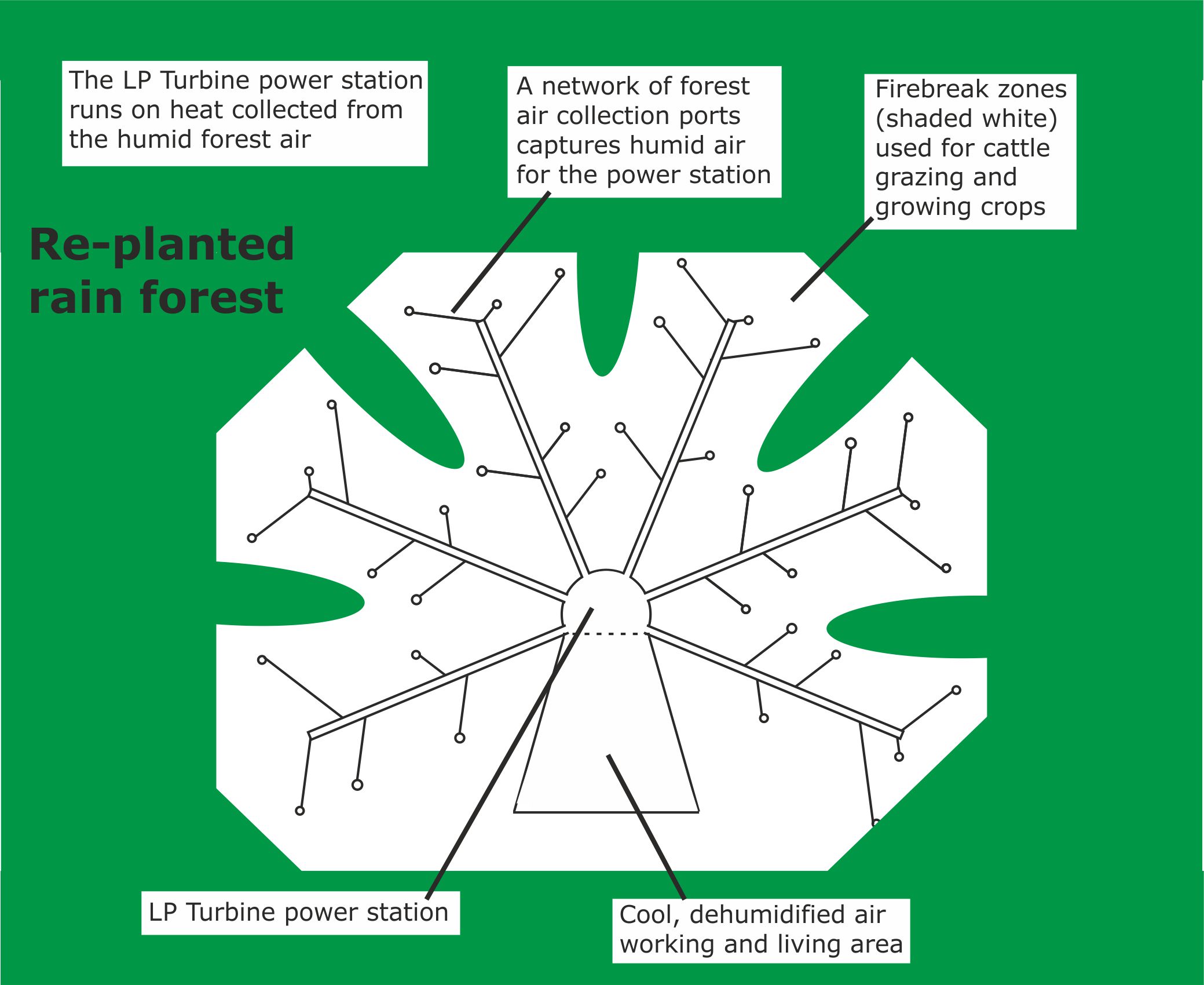
Figure 4 This is a plan view of a replanted rain forest based LPT power station. (Not to be confused with a Dalek on a bad hair day!)
The long conduits that reach out from the power station can double up as agricultural glasshouses where intensive agriculture can deliver high yields.
Replanted rain forests can attract support from ethical investors by acting as carbon sequestration sites. The following vertical cross section through an LPT moist air conduit and adjacent land shows how.
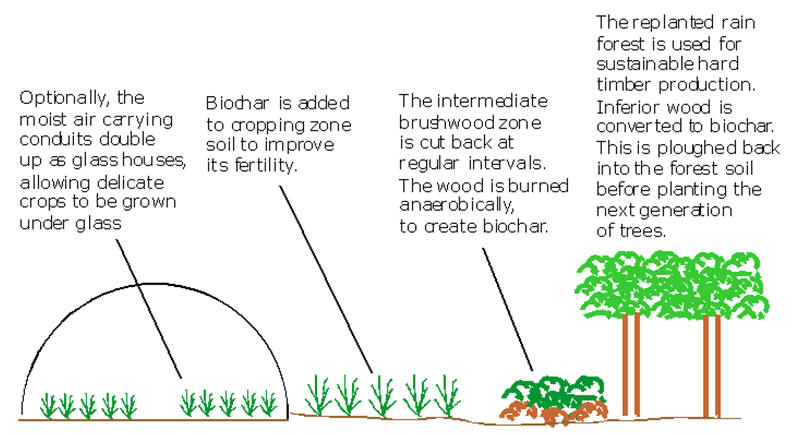
Figure 5. The archaeological evidence suggests that biochar can remain locked in rain forest soil for more than a millennium. Rain forests growing on improved soil have a lower canopy and denser undergrowth. This should improve the moist air holding capacity of the forest. [“Hand made”, New Scientist, P42, 4 June, 2011.]
The high value cropping areas inside the tunnels will be protected from physical erosion caused by violent tropical rainstorms.
Improved soil quality will assist the replanted forests to continue growing even during the periods of draught that are increasingly common, thanks to climate change.
Additional roles
Rainforest trees rely on nutrients stored in dead organic material in the top 20 cm of soil. Nutrients at a greater depth are leached out by heavy rainfall. But this topsoil is depleted by slash and burn farming and severe forest fires. This means that replanted forests are slow to grow.
Ideally, balanced fertilisers would be added to boost re-growth, but field observations suggest that nitrogen is the most important additive.
Legume trees that make their own nitrogen fertiliser grow up to nine times as fast as other trees in replanted areas. This can cause problems, because they crowd out other trees during the early years. On the other hand, it also suggests a novel environmental role for forest LP Turbine centres. They could become district hubs for fertilising the young forest zones. This would help to create a balanced ecosystem with both legume and other trees maturing in harmony.
The LP Turbine electricity could be used for:
- Making nitrogen fertiliser using the Birkeland-Eyde process.
- For manufacturing hydrogen by electrically splitting water. This could be used as helicopter, light aircraft or drone fuel, for craft spreading the fertiliser over large areas without having to construct access road networks.
BUT, this is only an option for consideration. Research will have to be done, to ensure that the heavy tropical rains do not flush out the nitrogen fertiliser, resulting in algal blooms in the forest waterways. Perhaps nitrogen fertiliser blended with biochar could provide a drip-feed of nitrogen.
1.12 New job opportunities for communities left behind by globalisation and automation
Artificial intelligence, computers and robotics can all replace human operators. This is a threat to jobs, especially low and semi-skilled work. Globalisation has made the problem worse because in addition to low wages, the emerging countries can keep manufacturing costs down by using dirtier, but cheaper energy.
In contrast, LP Turbines will create new jobs because low cost energy will allow us to do new things. It will also eliminate the competitive edge offered by nations run on 'dirty energy'.
Please visit this linked webpage for further details.
1.13 Aviation
Hydrogen is touted as the green aircraft fuel of the future, but there are many problems to be overcome. Fortunately, several of them can be reduced or eliminated by incorporating LP Turbine technology.
The big attractions of hydrogen are that, weight for weight; it delivers more thrust than jet engine fuel, and that it is clean, producing no carbon dioxide when it burns.
The downsides are that liquid hydrogen is bulky, needs to be kept cold at -253oC or cooler, and is an order of magnitude more expensive to manufacture and then transport from the production plant to the aircraft runway.
LP Turbines can slash the manufacturing costs by converting heat from atmospheric air into electricity, then using this electricity to split water into oxygen and hydrogen. The manufacturing cost can be further reduced by using the heat extracted during the liquefaction process to drive a second LP Turbine. All of this can take place on a relatively small ‘Just in time’ basis, at a site close to the aircraft runway.
Existing proposals for using the hydrogen include burning it inside a modified jet engine or consuming it inside a fuel cell, to produce electricity for spinning an aircraft propeller. A new option would be to burn the hydrogen, to warm an onboard LP Turbine as shown in Figure 10 below. The required LP Turbine would be bulkier than an equivalent fuel cell, but would use the energy stored in the hydrogen more efficiently, thus reducing the weight of liquid hydrogen that needed to be carried.
While on standby, a backup LP Turbine could produce a modest amount of extra electricity, running on heat extracted from the outer jacket of the onboard hydrogen storage tank.
Hydrogen can also be combined with carbon dioxide to form a carbon fuel with net-zero greenhouse gas emissions. LP Turbines could be employed in various ways to produce the required CO2. For example, the oxygen produced during the water splitting process could be used to burn municipal rubbish in a pure oxygen atmosphere. This would produce an exhaust gas that is very rich in CO2, making it relatively easy to capture. The heat produced during the combustion process could of course, be used to generate a significant fraction of the electricity required for water splitting, with additional heat being extracted from the atmosphere.
1.14 Shipping & deep sea mining
LP Turbines for marine propulsion can run on thermal energy extract from the adjacent air or water. Both require de-icing systems to ensure that they can continue working at around the freezing temperature of (sea) water.
For large ships operating in tropical waters, the air cooling provided by LP Turbines could solve problems for both cargo and passengers.
Cargo shipment
Container vessels that carry perishable goods could extract thermal energy from their cargo, keeping it cool.
Cruise liners
Crowded cruise ships provide an ideal breeding ground for COVID 19 and other airborne diseases. [COVID-19 pandemic on cruise ships - Wikipedia ]
The problem is most acute in tropical waters when conventional air conditioning systems recirculate the viruses along with the cooled air.
Aerial transmission could be reduced by replacing closed loop air conditioning with LP Turbine based open loop air cooling that carries the viruses away.
Protecting marine wildlife
Conventional propeller powered shipping poses several threats to marine life.
Marine creatures of any size can be injured by the rotating propellers and larger creatures that possess too much inertia to be pushed out of the way can be injured by colliding with the moving ship’s prow [ The threat from vessel strikes - Whale and Dolphin ...].
Noise produced by shipping, especially that created by the cavitation of bubble clouds behind rotating propellers disorientate sea mammals and coral dwelling fish.
[Frontiers | The Effects of Ship Noise on Marine Mammals—A ...]
All of these problems can all be reduced by novel marine propulsion designs that incorporate LP Turbines.
(i) A variation on conventional screw propeller thrust design
The propeller(s) would be positioned inside ducts that pass through the interior of the hull from bow to stern. Heat to power the LP Turbines could then be captured from water outside the hull plus that flowing through the ducts. If the propeller(s) are mounted at the bow end of the ducts, the increase in water temperature caused by the propellers doing work on the water can be exploited. A large filter grid in the form of a V shaped prow at the inlet end would minimise the relative water inlet speed and prevent all but the smallest marine life being drawn in.
Sets of two counter rotating propellers in series, inside each duct would be quieter than current exposed designs and provide greater scope for reducing cavitation.
A permeable prow could also be designed to be a lot softer than a rigid hull in the event of a vessel hitting a large sea animal.
(ii) Propeller free designs
The following proposals were inspired by Crookes radiometer, a light powered heat engine.
[https://en.wikipedia.org/wiki/Crookes_radiometer]
(a) Warm climate vessels running on thermal energy extracted from the water
The warmer the water surrounding a vessel, the more violently the water molecules bounce off the hull. This is experienced at a macroscopic level as an increase in water pressure on the hull.
Under normal marine conditions, these changes in pressure are approximately the same around the hull, so they go undetected. However, by employing LP Turbines, the water at one end of the vessel can by cooled by extracting thermal energy to drive an LP Turbine. At the opposite end, the water can be heated by an electric current supplied by the LP Turbine.
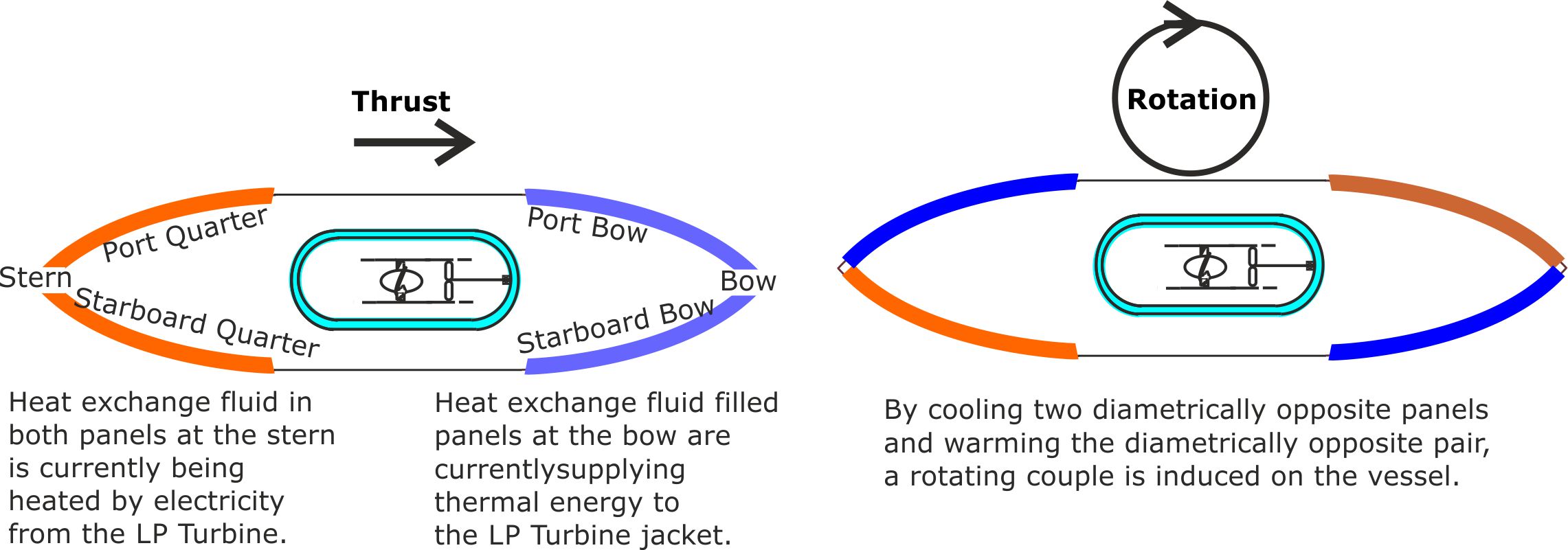
Figure 7. Differences in water temperature along different sections of the hull can be used to induce a thrust or a couple.
The heat exchange fluid can be air, making the vessel into a double hulled ship.
(b) Cool climate vessels running on thermal energy from the atmosphere
These operate on similar temperature difference principles, but instead of inducing a net force by cooling and warming water on opposite sides of the vessel, the panels would be placed above the waterline, cooling and warming the adjacent atmospheric air.
Deep sea mining
The deep sea bed is rich in nodules of manganese, cobalt, nickel, copper and other minerals.
If deep sea mining becomes necessary, to meet our future mineral needs then we need to come up with a mining technique that minimises the damage to the ecology of the seabed. Current mining company proposals involve scouring the seabed to collect the nodules and then pumping them to the surface. This method damages habitats that have remained pristine for millions of years and removes the hard nodules that some deep sea creatures use for anchage or shelter.
The following diagram shows the first draft for an alternative method of mining that minimises the disturbance of the seabed and substitutes the nodules with imported similar sized rocks, for providing growth platforms or shelter.
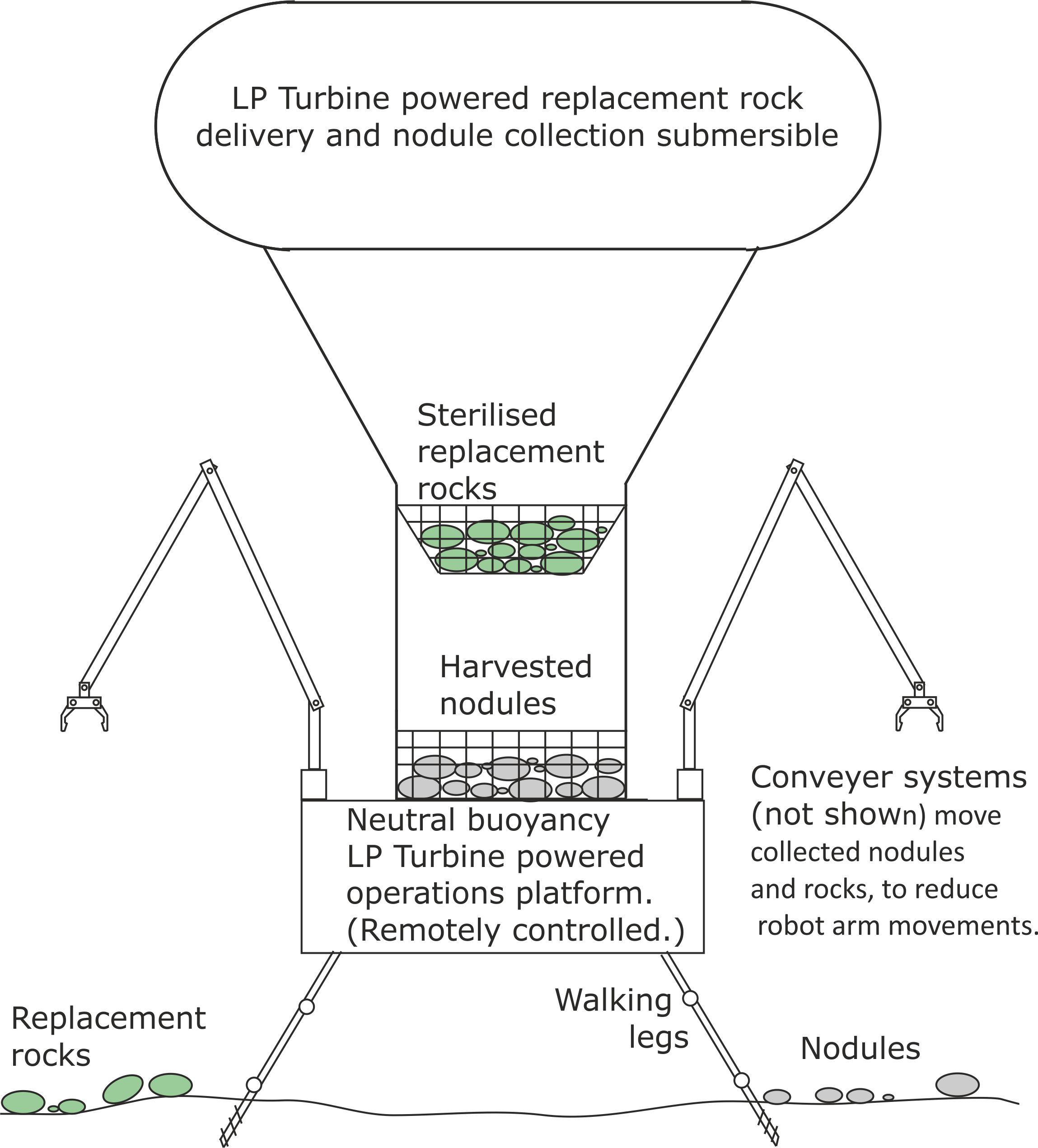
Figure 8. The LP Turbines will require strong thick outer shells to operate at great depths where the water pressure is high. This does not affect their operating efficiency, but forces the air inside the turbine body to circulate at a slightly lower temperature.
Sponges and sea anemones grow off the hard nodule surfaces, so some nodules should be left unpicked to preserve the species.
Those specimens that are removed from their habitat by harvesting are likely to be in a better physical condition than those removed by seabed trawling. These healthy specimens will be welcomed by bioprospectors who are seeking to find new nature based drugs and industrial chemicals.
Research suggests that metallic nodules act as batteries that provide electricity for splitting seawater into oxygen and hydrogen. This may oxygenate the deep water, allowing animal life to survive at great depth. Until such times as we know better, it would be wise for the replacement nodules to be coated with a layer of low economic value metals that can replicate the electrolysis process.
1.15 Road vehicles
At first glance, LP Turbine powered road vehicles would be superior to battery and hydrogen powered transport. But it is far too early to get excited by this prospect.
Two of the challenges for vehicle designers will be making the LP Turbines compact enough to fit inside vehicles and preventing icing up.
The vehicle design will probably include features that maximise the mass rate of airflow over the LP Turbine in order to minimise the drop in temperature of the exiting air.
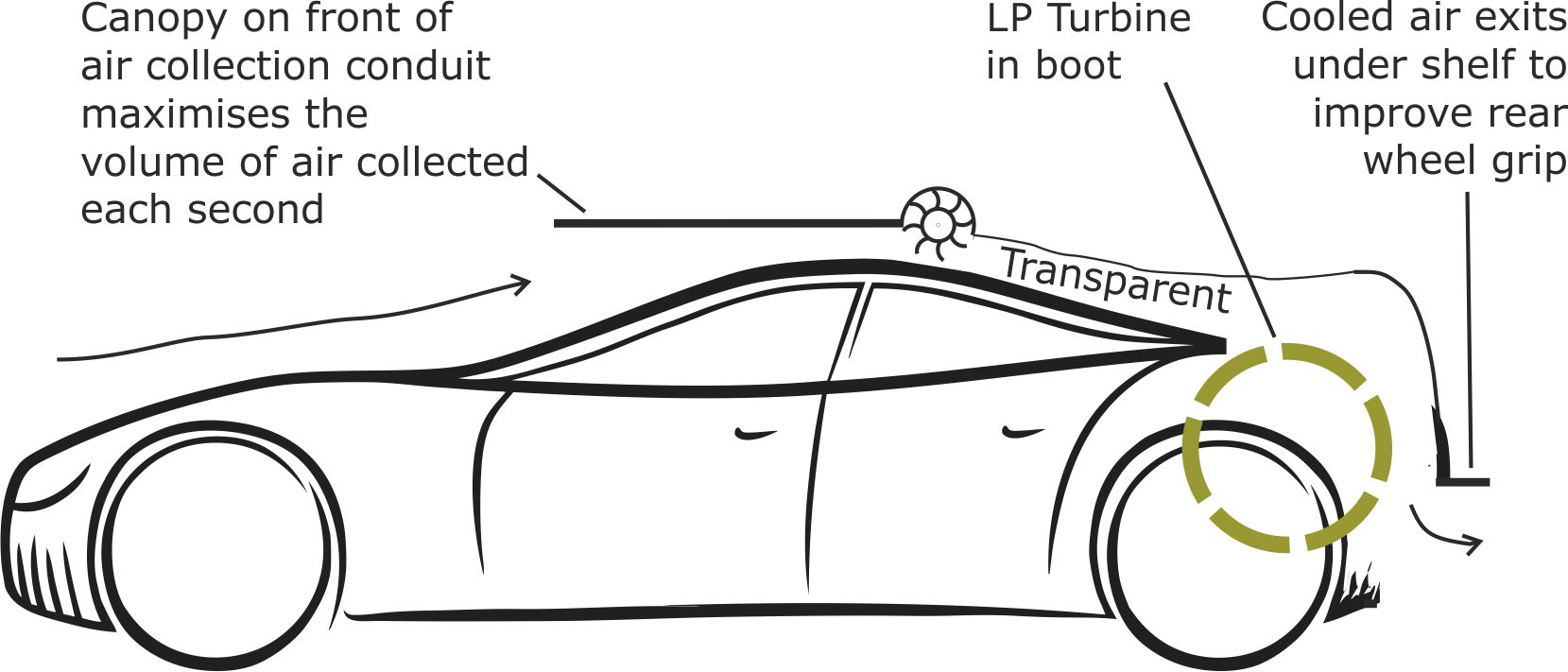
Fig 9. A first suggestion for the bodywork changes for an LP Turbine powered car. The improved road holding can be shared between all road wheels in warm weather by diverting the cold air down into a hollow panel under the floor pan.
In warm weather the exiting air can then be directed down onto the road, to provide road surface cooling.
Asphalt tends to age faster at higher temperatures, so keeping roads cool will increase their lifespan.
HYDROGEN+ ATMOSPHERIC ENERGY POWERED VEHICLES
One design option would be to run the LP Turbine on thermal energy extracted from the air in warm weather, with hydrogen being burned to provide top up thermal energy when close to icing up conditions.
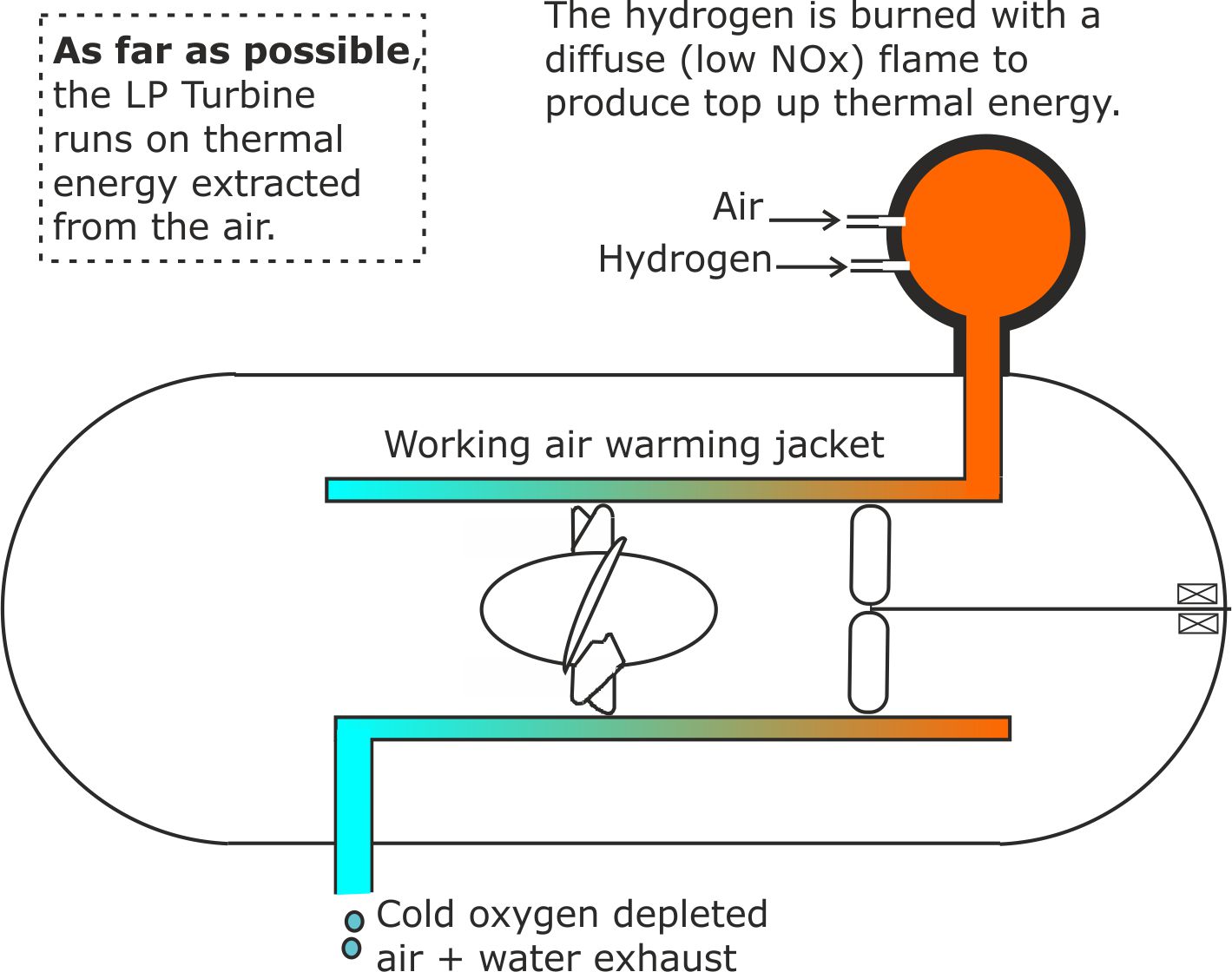
Fig 10.
If this LP Turbine is running on a mixture of thermal energy extracted from the air and by burning hydrogen, it only needs to burn sufficient hydrogen to keep the LP Turbine casing above the freezing point of water. Even when running solely on hydrogen, it should still be more efficient than generating electricity using a fuel cell because these are only 40-60% efficient.
1.16 Resilience to cyber attacks, massive solar storms and natural disasters
Stand alone LP Turbines and small local power grids will be less tempting and far more resilient to attacks by hackers and cyber criminals.
Nature’s equivalent in the form of massive solar storms will also be less of a threat. [Solar stroms are discussed in this article: http://uk.businessinsider.com/solar-storm-effects-electronics-energy-grid-2016-3?r=US&IR=T]
LP Turbine based micro-grids will also be more resilient to earthquakes, hurricanes and other natural forces compared with complicated national electricity grid systems.
In the aftermath of a major disaster, acquiring spare parts to repair LP Turbines will be simplified if their designs are standardised.
1.17 Keeping sewage out of rivers
Water treatment companies are allowed to dump raw sewage into rivers under ‘exceptional circumstances’, usually after very heavy rainfall, when the treatment system is unable to cope with the high volume of sewage entering the treatment plant.
In principle, the problem can be reduced to a tolerable minimum by filtering the sewage particles out before the sewage water enters the river, and then sending the concentrated sewage that has been removed for treatment.
Cyclone filters, similar to those employed in bagless vacuum cleaners would be ideal for this job because they have no moving parts and are easy to service. The problem is that accelerating the water up to the high speeds required for the filter to work requires a lot more energy than accelerating dusty air inside a vacuum cleaner. Currently, this is far too expensive for the water companies and has a large carbon footprint. But these problems could be solved by using LP Turbines to generate the electricity required.
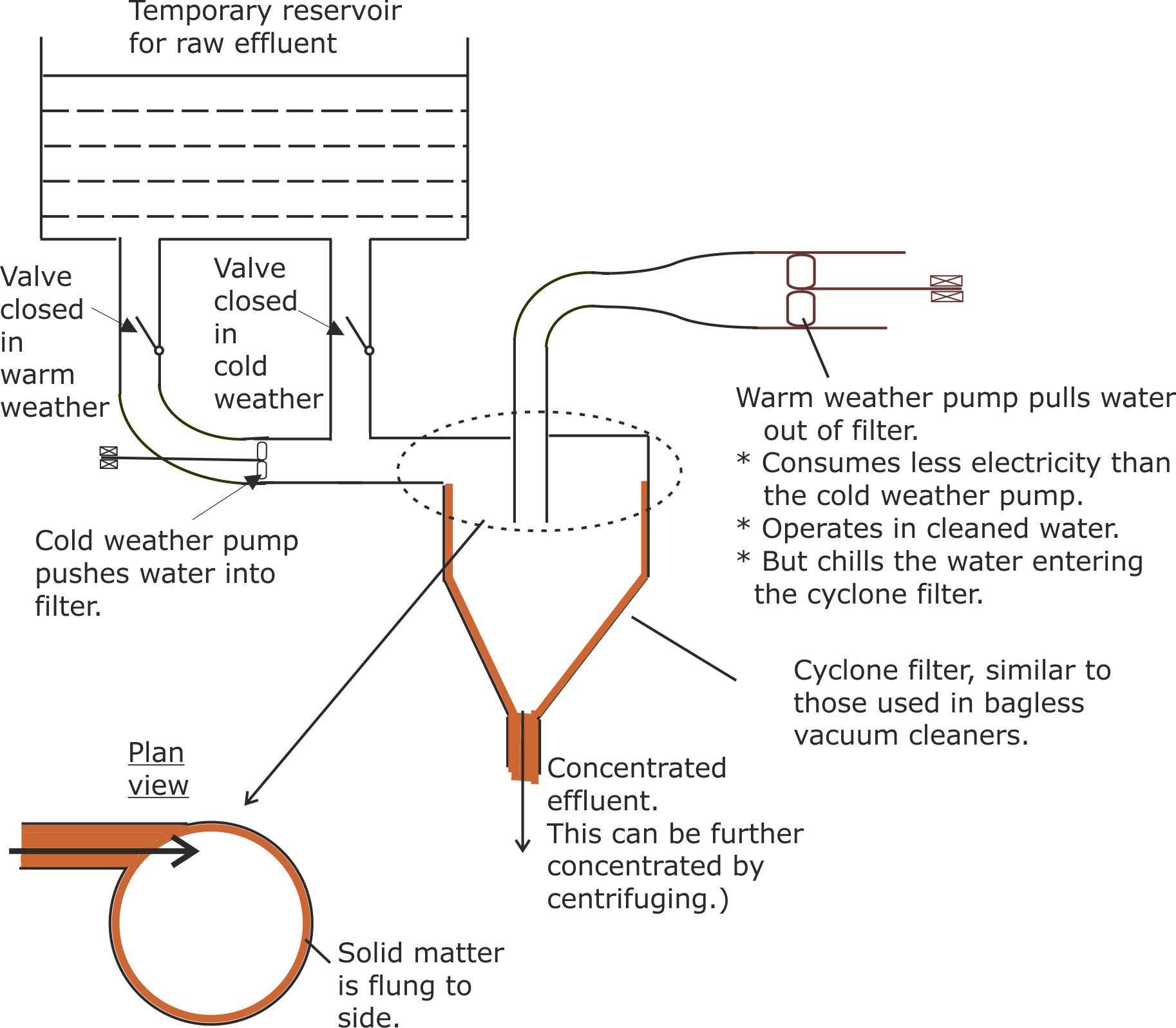
Figure 11. Pushing the water forward on the inlet side allows it to accelerate without cooling. This would only be necessary in cold weather, when the water enters the system just above its freezing point.
The water will need to be held in a temporary reservoir and filtered in batches, to ensure that filter spins the water at high speed.
LP Turbines could also be used to power ultraviolet (UV) radiation sources, for disinfecting the filtered water before it is discharged. [UV radiation can effectively kill or inactivate a wide range of microorganisms, including bacteria, viruses, and protozoa, that can contaminate water.]
1.18 A new challenge for the valiant campaigners against climate change
Latent Power Turbines in their manifestations as described on this page will go a long way towards bringing the climate crisis under control, but your work is not done yet.
This is just the first round in the quest to bring humanity back into harmony with nature.
The planet still needs your energy and commitment because if we leave commerce to the mercy of human greed and the free markets, we will be swamped by discarded products and the loss of finite resources.
Latent Power Turbines will provide a replacement technology for advanced countries with mild climates, but they will be a fast breeder technology for the developing countries with tropical climates.
Thus, each LP Turbine purchased in a developing country it will create wealth for the owners and (in many cases) job opportunities for others. This will create additional wealth and the demand for more LP Turbines, with more jobs being created and so on. The positive feedback will only tail off when full employment is achieved.
But in principle, ‘free energy’ will allow prosperity to increase indefinitely because any shortage of workers will be made up for by robots and automation.
This is where the new role for the environmentalists will emerge. They need to set a global target of humanity living in harmony with nature, in a circular world economy where nothing is wasted.
So, instead of fighting consumerism, they will need to go along with it but using the new resource of cheap clean energy, to ensure that materialism is sustainable (or even better), benefits the environment.
It will be important to think proactively (and urgently) to ensure that manufacturers, governments and consumers are steered towards sustainable practices long before wasteful habits have a chance to set in.
PART TWO:
International implications of an LP Turbine (LPT) economy
2.1 Converting the world from a linear to a circular economy
Before modern humans became the dominant species, the environment was (between astronomical catastrophes), a slowly changing circular system with most of the materials required for life being recycled.
After death, all the materials in the bodies of creatures and plants eventually became the building materials for new generations of life or were converted into fossil deposits.
Likewise, made objects such as nests and beaver dams were recyclable.
Occasionally, new toxic chemicals or toxic forms of life evolved, but their influence fell to a tolerable level, as susceptible victims were killed off.
But since industrialisation, humans have been creating linear systems by introducing changes far more rapidly than the rest of nature can cope with. We are reversing fossilisation by burning fossil fuels and creating new toxic materials at an unnatural rate.
Scientists refer to this modern linear systems era as the Anthropocene.
Some environmentalists anticipate our Anthropocene future with despair, but in an LP Turbine era, the outlook is much brighter.
The Anthropocene doom prediction
Humanity needs to reverse its indulgence in materialism, if we are to avoid destroying the planet.
The Anthropocene hope prediction
Latent Power Turbines will give humanity access to at least ten times the amount of energy that it consumes today, but without damaging the environment. If we use this wisely, we can return to the pre- Anthropocene harmony with nature, while allowing the whole of humanity to enjoy an improved standard of living.
The diagram below is an analogue, comparing the development of an advanced circular economy to the development of closed loop heat engines (i.e., LP Turbines).
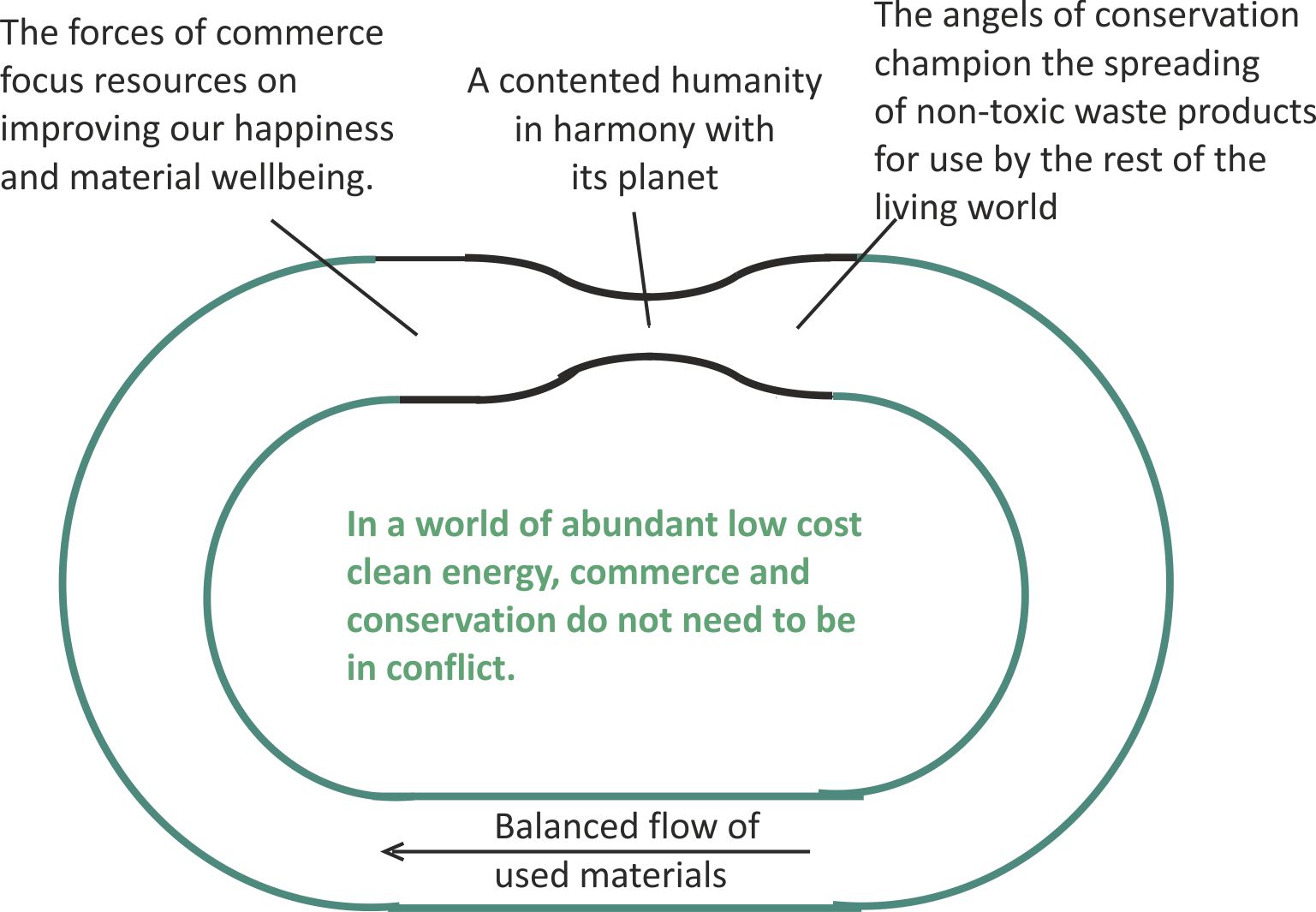
Figure 12. In a closed loop economy, we could use the cheap clean energy generated by LP Turbines to adopt manufacturing methods that mimic life in a pre-industrial world.
Thus, we would only manufacture products where all of our waste would be in the form of materials that could be used by some acceptable form of life, or be fossilised.
An example of acceptable Anthropocene fossilisation would be the conversion of organic waste into biochar to enrich the soil. This ‘short term fossilisation’ would lock away carbon for up to a thousand years.
2.2 Easing the transition to an LPT economy
In the developed countries, the energy sector is an important employer that generates tax revenue and provides a safe investment for pension and other funds.
In order to minimise the harm to funds and employment during the transition, governments will need to step in. One option would be to nationalise virtually all aspects of the home energy industries, guaranteeing jobs in the short term and providing fair compensation for investors. Nationalisation could also provide price stability for customers, with the electricity tariffs being independent of the method of electricity production.
In order to take advantage of the indoor air cooling benefits of LP Turbines, all building should host sufficient LP Turbines to meet (say) 2-3 times their current needs. Networks linking small clusters of LP Turbines together would allow individual Turbines to be taken out of action for servicing and repair. But there would be no need for massive national networks.
Radically altering electricity grid structures in this way will take a decade or more. So a two phase plan is proposed, with LP Turbines initially running remotely at power station sites that produce waste heat. Then, during phase two, the same LP Turbines would be moved to their permanent homes, mounted on buildings, where they can provide both electricity and air cooling.
Here is an example in which the temporary home has a glass roof and is ultimately used as a horticultural glasshouse.
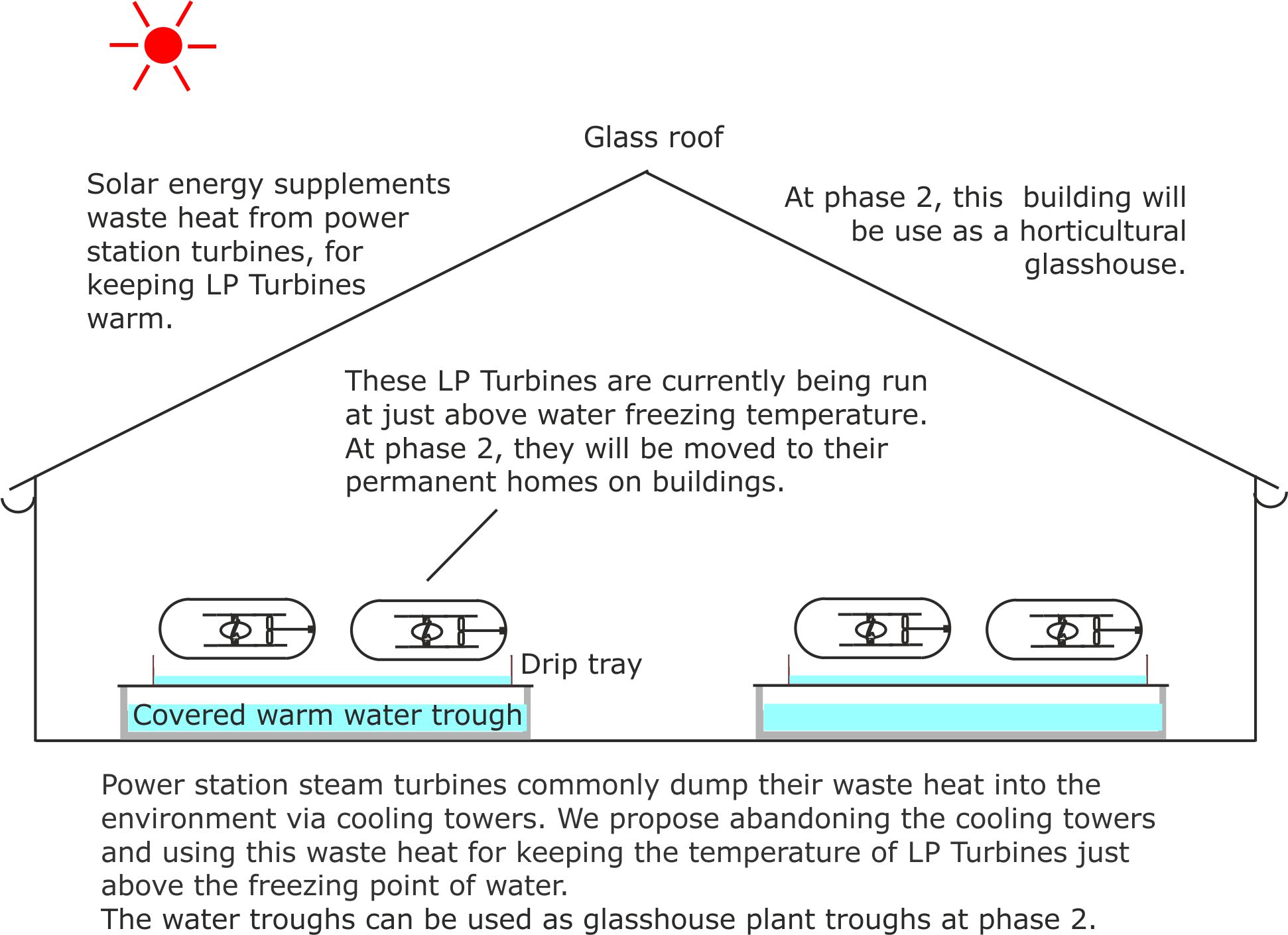
Figure 13. Initially installing LP Turbines on existing power station sites, then moving them to permanent locations later would reduce the time lag before consumers can enjoy the benefits of cheap clean energy.
2.3 Developing countries will avoid the cost of building national power grids
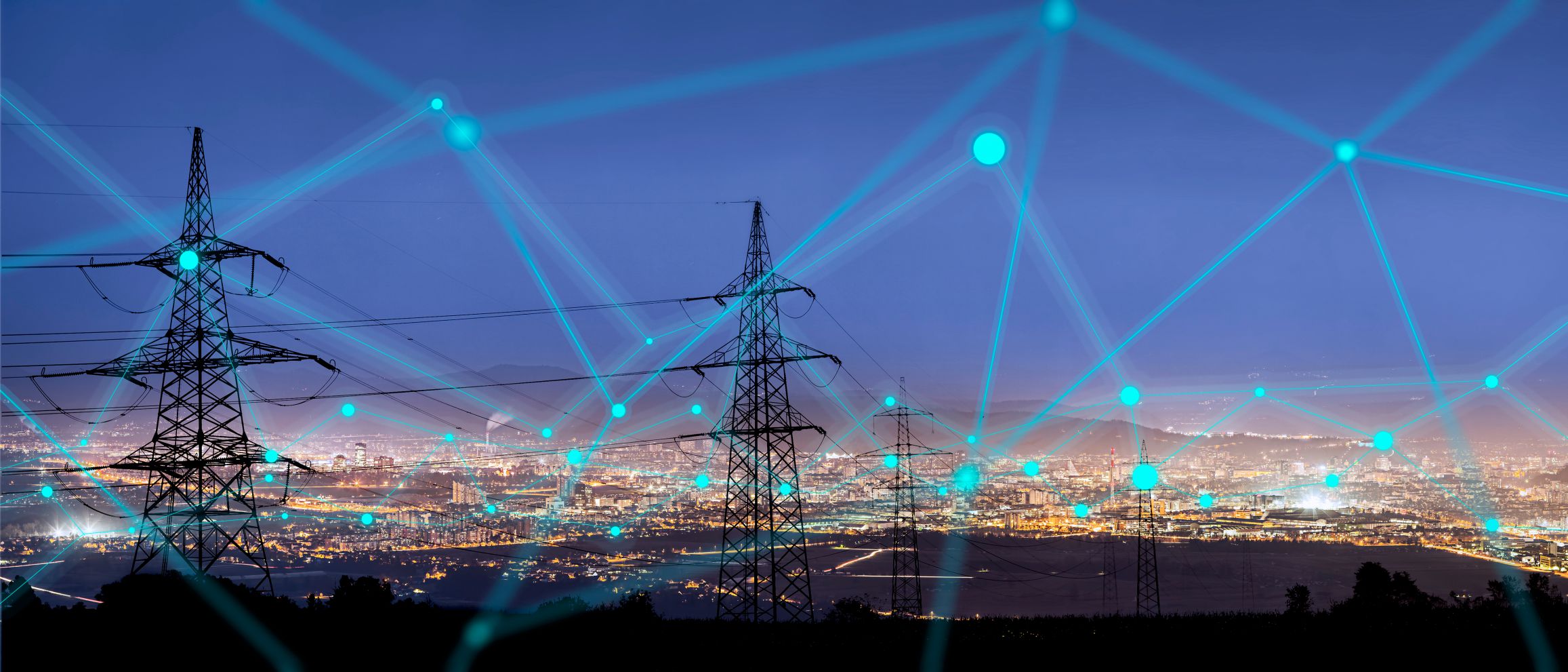
Figure 14. Prosperous nations have built national power grids to link together their electricity consumers and suppliers. This required a massive investment but was essential for creating their modern economies.
LP Turbines will allow the developing nations to completely sidestep this expensive stage in their development because they can deliver all the electricity a thriving community needs at a local level. Better still, they will also deliver free indoor air cooling and a useful amount of fresh water. In addition, independent local network production will be relatively secure against massive cyber attacks and other network outages, such as those caused by solar flares.
2.4 LP Turbines will speed up the development of other new technologies
There are also a number of other technology trends that are assisting localised economic growth.
Mobile phones have eliminated the need for a national landline telephone network, 3D printing will allow many machinery spare parts to be made locally and (accelerated by the pandemic), the internet is starting to provide comprehensive access to advanced information and learning. The pandemic has also accelerated the use of drones for delivering medical supplies to remote locations.
Using these technologies, entrepreneurs will be freed up to develop businesses and create jobs locally, even in countries handicapped by poor central governance.
As a consequence, poor people living in tropical countries will eventually enjoy a similar standard of living to today’s citizens in the advanced nations.
2.5 Financing care for the elderly without heavily taxing the young
The advanced countries are facing a looming elderly healthcare crisis, with the developing countries likely to face similar problems in the second half of this century.
Fortunately, LP Turbines offer financial solution.
LP Turbine based power systems will be very cheap to run because there will be no fuel costs and only modest servicing costs. Further savings will be made because there will be no need for a green energy taxes or to pay for the maintenance of national grids. So, once the installation and compensation costs have been paid for, governments will be able to extract a high level of tax revenue, while still keeping electricity prices lower than today.
A national system that is built to comfortably meet peak time demands will also be capable of producing approximately half that amount as surplus off-peak electricity. This will stimulate the expansion of electricity based industries, further increasing the tax take.
It is proposed that a large fraction of the total tax take should be hypothecated to pay for health and social care for the elderly, allowing them to be looked after without placing a tax burden on the young.
2.6 LP Turbines and the balance of international power
The advanced countries will do very well out of LP Turbines, but the developing countries will do even better.
This will shift the balance of power around the globe during the rest of this century.
2.6.1 The global influence consequences for China and the USA
Three key factors favouring national economic strength in the future will be population size, having a young average age and access to tropical heat. Access to desert sand will also help. These factors will favour the large developing countries that are currently economically weak. Consequently, the huge economic gap between China and the USA on one side and other countries with large populations on the other will shrink. A new ‘flatter’ class of economic giants will emerge, with India, Pakistan, Bangladesh, Nigeria, Brazil, Indonesia, the Philippines and others having the economic clout to make their voices heard.
2.6.2 Global influence consequences for Russia
In western eyes, Russian military power and the meddlesome ways of the current Russian leadership are seen as a threat. But they are seen as a sign of strength in Russia and enjoy popular support. However, Russia only ranks as eleventh as a world economic power, with about half of its state revenue coming from the international sales of gas and oil. In a future LP Turbine based world economy, this income will dry up and Russia’s overseas adventures will have to be abandoned.
2.6.3 UN Security Council implications for its permanent members
(France, Britain, Russia, China and the USA)
These countries were granted permanent membership of the United Nations Security Council by virtue of being on the winning side in the Second World War.
A century later, as other countries overtake them in terms of population size, youth and economic strength, France, Britain and Russia are likely to lose their permanent status.
As funding for UN projects comes increasingly from the newly prosperous countries, China and the USA will also find their permanent seats on the Security Council under threat.
2.6.4 Implications for post-Brexit Britain
- It will be several years before most countries have a clear idea about what goods and services they wish to trade in the new LP Turbine era. Any trade deals negotiated in the meantime will have little long-term merit.
- In order to give the people of Northern Ireland a fair post-Brexit deal while the new trading opportunities are being resolved, it would be helpful to negotiate a temporary Norwegian style trade deal with the EU. For the period of the agreement, this will completely eliminate the need for Northern Ireland to have any hard borders imposed upon it.
- The dream of a ‘Global Britain’ is unlikely to materialise because, although the country will become more prosperous, it will fall in its world economic ranking.
- Populist politicians in Britain’s old colonies will be increasingly inclined to pick fights with a weakened Britain, in order to boost national loyalty at home.
2.365 Economic and political implications for the European Union
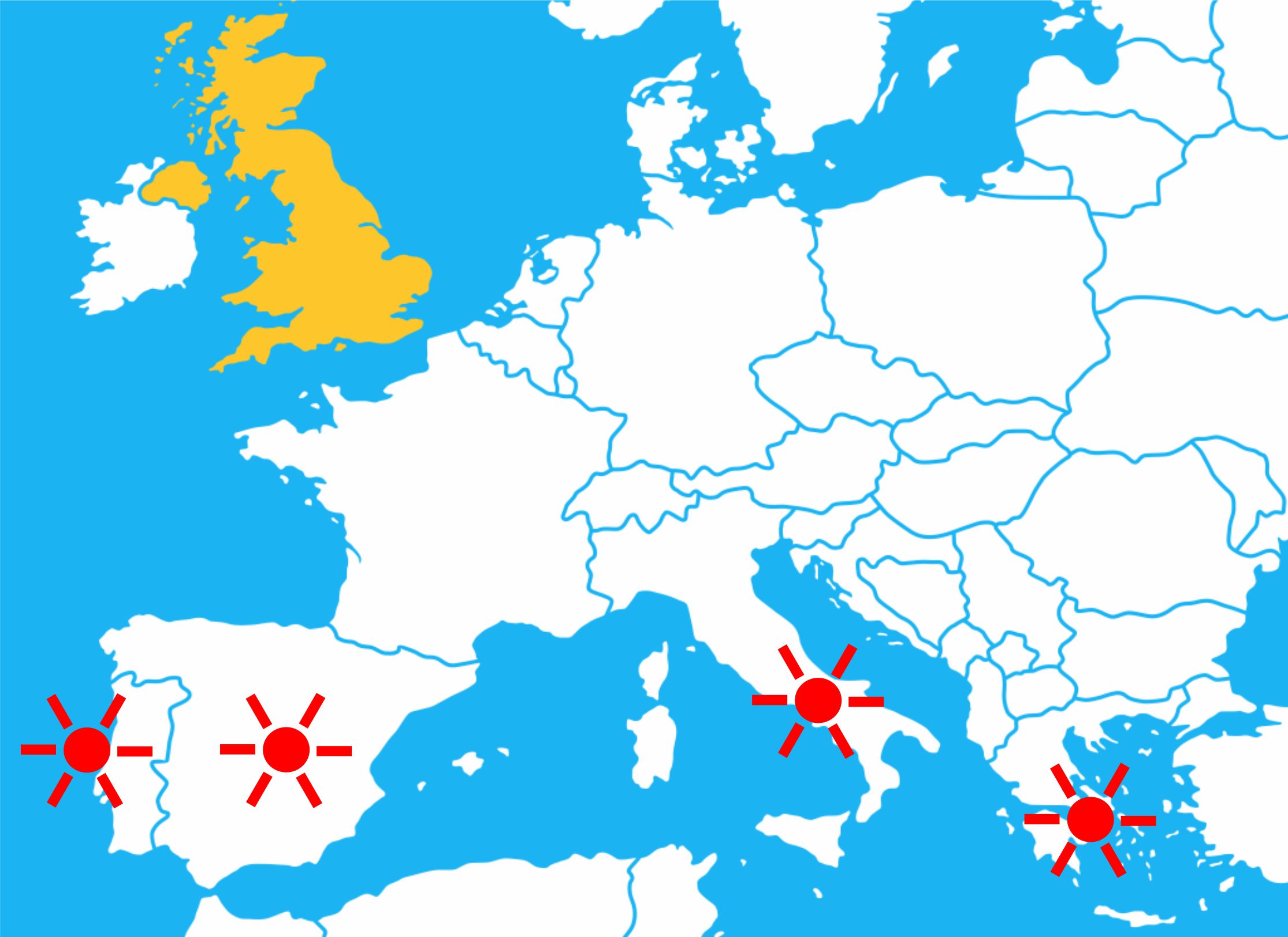
Figure 15. The warmer states of southern Europe will gain the greatest boost from a shift to LP Turbine power, reducing economic differences across Europe.
- Economic differences between the cool northern and warm southern states will shrink.
- This will reduce the pressure on currently prosperous EU countries to financially aid the poorer states via EU funding.
- The threat from Russia will be removed when Russia loses its oil and gas revenues. This will reduce the case for creating a European army.
- In the second half of this century, all the European states could fall out of the top twenty world economic powers. But if the EU retains its present membership, it will still be an economic power comparable to the USA.
- As the rest of the world becomes more self sufficient, prosperous and politically stable, the appeal of Europe as a destination for illegal economic migrants will fade. To reinforce this trend, potential economic migrants need to find it more attractive to set up an LP Turbine based business at home, rather than take a chance on migrating to Europe.
The EU may find it cost effective to subsidise the price of LP Turbines and other tools in the migrants’ home countries. - Russia and the UK may be tempted to join the EU as their own international influence declines.
- There were important sovereignty reasons why the UK voted to leave the EU. There was also distaste for the misuse of the UK contribution to European funds. Similar arguments appeal to the voters in the remaining richer EU countries. So, if the EU wishes to remain united and see the UK rejoin, it needs to carry out radical reform, handing back many powers to its member states. Factors 1 to 5 above will make this reform easier.
Conclusionn
In an LP Turbine era, the champions of the EU project will have to ask themselves a different question if they want European values to remain relevant in a changing world.
Instead of asking “How can we overcome our national differences in order to gain strength comparable with the USA?” They should be asking “How can we take advantage of our national differences in order to make a unique contribution in a changing world?”
On this website we offer some suggestions for creating an improved EU 2.0. These include a proposal for enabling a reformed EU to increase its diplomatic influence, even as its relative economic power wanes. A suggestion is also made for decoupling local housing price control from EU central bank interest rates.
2.6.6 Economic implications for an independent Scotland
- According to conventional thinking, the North Sea oil industry is expected to provide Scottish jobs and revenue for some years to come. Scotland’s green energy future is seen as even brighter because Scotland has the most favourable wind, tidal and wave power resources in Europe. However, all these resources will be priced out of the market in an LP Turbine based economy.
- On the other hand, the uglification of Scotland caused by wind turbine farms and the Beauly to Denny power line will be reversed. This will help in creating new jobs in the tourism industry.
- Scotland, along with other mild climate countries, could find it difficult to attract international investment because LP Turbines offer a greater range of business opportunities in warm climates.
